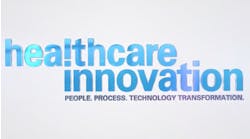Population health management has become the buzzword du jour in the healthcare industry as healthcare organizations across the United States are starting to adopt new, value-based payment and delivery models, such as accountable care. With the advent of the Affordable Care Act, many provider organizations are preparing to go “at risk” and take outcomes-based capitated or bundled payments and, in support of this new paradigm, are investing resources in re-architecting their care delivery infrastructures, from a personnel, contracting and IT perspective.
As the buzz continues to grow around population health management and Big Data, these have become terms in our industry that mean different things to different people. For some, they are more associated with data analytics, for others disease management. From our perspective, we see population health management as a convergence of four key components. From a data perspective, there is a requirement to acquire both clinical data (from EMRs, patient devices and even genomics), as well as claims data in order to get the most comprehensive and real-time view of the patient, regardless of where the patient has been seen. From a treatment perspective, organizations also need to have the ability to analyze this data at a macro level in order to stratify the population and to find cohorts of interest, but then they also need to dive down quickly into the longitudinal patient record and take action on an individual patient basis from the stratified lists. After all, it takes one patient at a time to ultimately improve the health of a population.
Working with many different types of healthcare organizations in the United States and around the world, we have seen several key elements emerge as best practices for managing the health of an overall population. With regard to IT strategy, we have witnessed a structured sequence of activities resulting in the optimal approach to population health management. This sequence starts with the efficient and timely acquisition of the data types referred to above, and the aggregation of that data in a patient-centric, normalized manner. This data – the longitudinal patient record – must then be accessible in a meaningful and convenient way to all stakeholders involved in the patient’s care (not just physicians – care coordinators, patients, and families too). With these core elements in place, analytics tools can “zoom out” to the macro level, providing insights that enable action to be taken by “zooming in” to the micro level. This action should take the form of condition-specific care plans for individual patients with tasks and deadlines assigned to the stakeholders – in the same convenient tools described above and integrated with the longitudinal patient record.
Our experience as a global company has enabled us to work within many countries and regions with less fragmented models of care than in the United States. We have seen firsthand the IT foundation and strategies required to be successful in a collaborative care model. With the United States healthcare model shifting quickly to a more holistic and coordinated approach, it will be interesting to apply lessons learned from other regions whose IT infrastructures have had to support such a model for several years already. There is so much hype around population health management and Big Data, including ONC’s latest emphasis that over the next 10 years, the industry should focus on the ability to query and retrieve all types of data to enhance our collective knowledge base. Yet, little empirical evidence exists in the United States as to how to successfully implement these models in a way that results in improved care quality and reduced costs. Combine the sense of urgency to manage population health with other pressing initiatives such as Meaningful Use and ICD-10, and it’s easy to see how overwhelming it can be for healthcare organizations to know where and how to focus their attention.
HMT editor’s note: We will trace the principles outlined above in action as we follow multiple Orion Health partnerships over the next several months. By creating reports describing organizations around the world at different points in their implementations – from go-live to those who have been using Orion Health technologies for some time and are seeing results – we hope to offer a clear and robust picture of best practices and emerging trends in population health management. Our first online report will be posted in the “Online Only Features” section of the HMT website in June.



